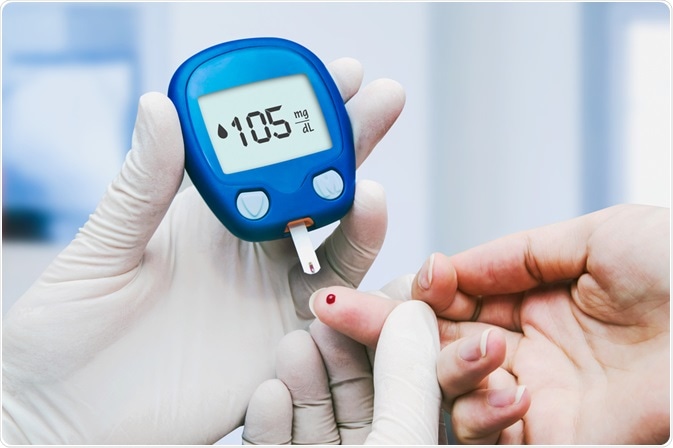While many are familiar with type 2 diabetes, few are aware of prediabetes, a serious health condition that affects 86 million Americans (more than one in three adults) and often leads to type 2 diabetes.1
People almost always develop prediabetes before being diagnosed with type 2 diabetes.1 Prediabetes is sometimes referred to as impaired glucose tolerance (IGT) or impaired fasting glucose (IFG), depending on what test was used when it was detected.2 This means that someone has higher than normal blood glucose (blood sugar) levels, but not quite high enough to be diagnosed with type 2 diabetes.1
Nearly 90 percent of people with prediabetes don’t know they have it and aren’t aware of the long-term risks to their health, including type 2 diabetes, heart attack and stroke.1 Current trends suggest that, if not treated, 15 to 30 percent of people with prediabetes will develop type 2 diabetes within five years.1 The good news is that prediabetes often can be reversed through moderate (or modest) weight loss, diet changes and increased physical activity.1
Risk Factors
What’s difficult about detecting whether you have prediabetes is that there are no major symptoms for the condition. Speaking to a doctor and taking a simple blood test is the only way to truly determine if you have prediabetes.2
However, there are certain factors that put some people at higher risk for prediabetes and type 2 diabetes, such as:3
- Being overweight or obese
- Not being physically active
- Having a parent, brother or sister with type 2 diabetes
- Being over the age of 45
- If you’re a woman, having a history of gestational diabetes
- Being a man
Any one of these risk factors increases the chance that you could have prediabetes and should be discussed with your doctor.
Raising Awareness
The first step toward preventing prediabetes is to know your risk, which is why the American Diabetes Association (ADA), the American Medical Association (AMA), the Centers for Disease Control and Prevention (CDC) and the Ad Council launched the first national public service campaign about prediabetes.
The partners have created the website DoIHavePrediabetes.org where people can take a short risk test to determine if they may be at risk for prediabetes or type 2 diabetes. Along with the quiz, people can access lifestyle tips and learn how to enroll in CDC-recognized diabetes prevention programs.
Reversing the Condition
Once it’s been confirmed that you have prediabetes, making small lifestyle changes can help set you on the right track.3 A few tips to help prevent or delay the onset of type 2 diabetes include:
- Manage your weight – Studies show that losing five to seven percent of your body weight can reverse prediabetes. For a person who weighs 200 pounds, that’s about 10-15 pounds.3
- Get active – Get at least two and a half hours (150 minutes) of light aerobic activity every week. This could be as simple as going for a brisk 30-minute walk five days per week. Even 10 minutes at a time add up. Small steps can lead to big changes.4
- Eat healthier – Stock up on vegetables, low-calorie alternatives and remember to read food labels–the more you know about the ingredients in your food, the better decisions you’ll be able to make.5
- Quit smoking – Smoking increases the risk of serious health problems associated with diabetes. Talk with your doctor about treatments or programs that can help you quit.6
 Image Credit: Proxima Studio / Shutterstock.com
Image Credit: Proxima Studio / Shutterstock.com
Using a Support System
By knowing your risk for prediabetes and making changes to reverse the condition, you can join the national cause to prevent type 2 diabetes and lower the number of cases of the disease in the United States. Fewer cases of type 2 diabetes mean healthier communities, a healthier and more productive workforce, as well as lower health care costs for everyone.7 A great way to prevent diabetes is to join a CDC-recognized diabetes prevention program. People with prediabetes who take part in a structured lifestyle change program, like the one offered by CDC, can cut their risk of developing type 2 diabetes by 58 percent (71 percent for people over 60 years old).8
Many different types of organizations offer CDC-recognized diabetes prevention programs. For example, the Black Women’s Health Imperative highlights the success of the Diabetes Prevention Program, including their “Change Your Lifestyle. Change Your Life” program.9 They have featured success stories from both individuals and companies who have joined the program and made modest lifestyle changes to improve health and wellness.
Having prediabetes is your early warning sign. The key to beating prediabetes is not making lots of drastic changes to your life, but rather starting with two or three smaller shifts towards a healthier lifestyle. Small steps are what can make a big difference. As soon as someone discovers they may be at risk for type 2 diabetes, they should talk with their physician about further testing to confirm whether they have prediabetes and discuss the necessary lifestyle changes needed to help prevent the onset of type 2 diabetes.
References
- Centers for Disease Control and Prevention (CDC). About Prediabetes & Type 2 Diabetes. http://www.cdc.gov/diabetes/prevention/prediabetes-type2/index.html. Accessed on March 2, 2016.
- American Diabetes Association (ADA). Diagnosing Diabetes and Learning About Prediabetes. http://www.diabetes.org/are-you-at-risk/prediabetes/. Accessed on March 2, 2016.
- Diabetes Pro. Toolkit No. 3: All About Prediabetes. http://professional2.diabetes.org/PatientEducationLibraryDetail.aspx?pmlPath=All_About_Prediabetes_24dee6ff-cbf0-4a55-80b7-9d5d29de0bd7&pmlName=All_About_Prediabetes.pdf&pmlId=101&pmlTitle=All%20About%20Prediabetes%20-%20English&utm_source=dorg&utm_medium=Online&utm_content=prediabetesd&utm_campaign=pem. Accessed on March 4, 2016.
- ADA. Physical Activity. http://www.diabetes.org/are-you-at-risk/lower-your-risk/activity.html. Accessed on March 4, 2016.
- ADA. Healthy Eating. http://www.diabetes.org/are-you-at-risk/lower-your-risk/healthy-eating.html. Accessed on March 4, 2016.
- ADA. Smoking. http://www.diabetes.org/are-you-at-risk/lower-your-risk/smoking.html?loc=atrisk-slabnav. Accessed on March 4, 2016.
- CDC. Researched-Base Prevention Program. http://www.cdc.gov/diabetes/prevention/prediabetes-type2/preventing.html. Accessed on March 4, 2016.
- National Institute of Diabetes and Digestive and Kidney Diseases (NIDDK). Diabetes Prevention Program (DPP). http://www.niddk.nih.gov/about-niddk/research-areas/diabetes/diabetes-prevention-program-dpp/Documents/DPP_508.pdf. Accessed on March 4, 2016.
- Black Women’s Health Imperative. Change Your Lifestyle. Change Your Life. http://www.bwhi.org/what/change-your-lifestyle.-change-your-life./ Accessed on March 2, 2016.

0Comments